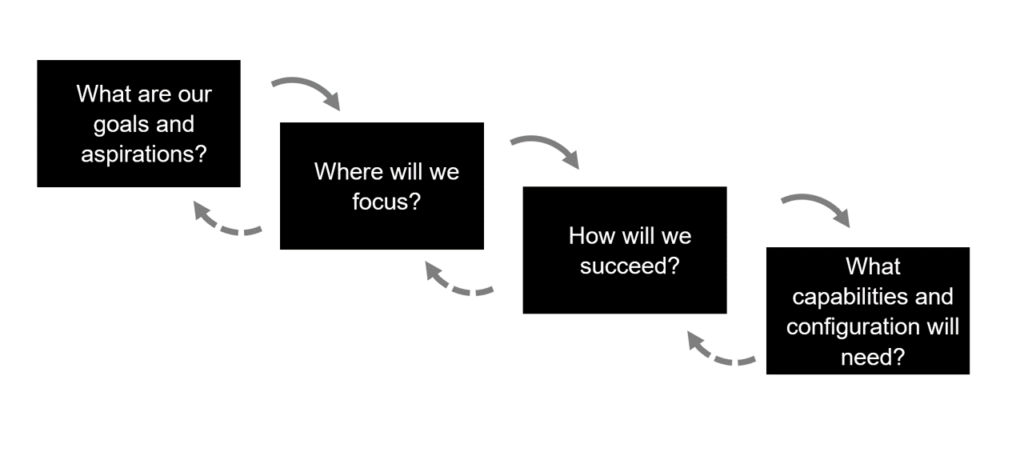Making Strategic Choices
Most people are familiar with some version of the homily “If you don’t know where you’re going, any road will take you there.” Creating an effective strategy is arguably the most essential foundational activity an organization will undertake if its members are to “know where we are going” and to participate in “getting there.” An effective strategy requires a well-articulated focus and direction, a simplified strategic planning process, and a clear cascading of relevant choices.
A Well-Articulated Focus and Direction
A well-articulated strategy provides clear direction and focuses for your organization, defining what you will do and, equally important, what you will not do. This clarity provides the basis for making decisions and allocating resources – time, money, and people – throughout your organization.
Simplified Strategic Planning Process
The strategic planning process is often thought to be arduous and time consuming. However, strategy can be simplified if we think about it as making a series of choices framed around the four simple questions in the graphic below*. [Source: Monitor by Deloitte, The Choice Cascade]. Based on my many years of experience as a strategy and organizational consultant, clients find the following four simple questions to be effective guides in developing their strategic plans. This is true for organizations that are non-profit, for-profit, or various hybrid business models.
The Choice Cascade
The “Choice Cascade” framework highlights four questions to be answered in sequence. Frequently, strategic choices made later in the planning process require revisiting prior answers. This iterative process ensures that your responses to each strategy question align with each other and provide consistency and coherence to your choices.
Figure 1: The Choice Cascade

Source: Monitor by Deloitte, The Choice Cascade
Four Simple Questions
- What are our goals and aspirations? — Identify what you are trying to achieve and your desired aspirations or results. Defining your vision and mission is typically included in answering this question. For example, if you are a non-profit or purpose-based organization, you should identify what problem(s) you are trying to solve and the specific social impact you are trying to bring about.
- Where will we focus? – This question helps you identify choices you must make, for example, which markets, geographies, customers/beneficiaries you want to serve. This question also prompts you to consider what brand image you want to convey in the areas you choose to focus.
- How will we succeed? – This question helps define your unique value proposition or what differentiates you from others in your focus areas. It is also a catalyst for several other critical decisions necessary to achieve your desired results or impacts; these include our optimal business model, our portfolio of products, services, or programs, and how we best deliver them.
- What capabilities and configurations will we need? — The focus here is to actively consider important organizational design issues as part of your strategy development process, not as an afterthought to your strategy. This question includes identifying core organizational capabilities, processes and systems, and structural design principles you will need to achieve your strategy.
Wrapping it all up
While these four questions may seem simple on the surface, my experience is that they lead to difficult but generative conversations among organizational leaders, strategy development teams, and staff. Additional and deeper insights often emerge as new answers may require revisiting prior choices. Finally, the thought process used to answer these four simple questions can be clearly articulated and communicated to all staff. This approach helps create a shared understanding of your strategy and an organization-wide alignment on how to move forward to execute that strategy effectively.





